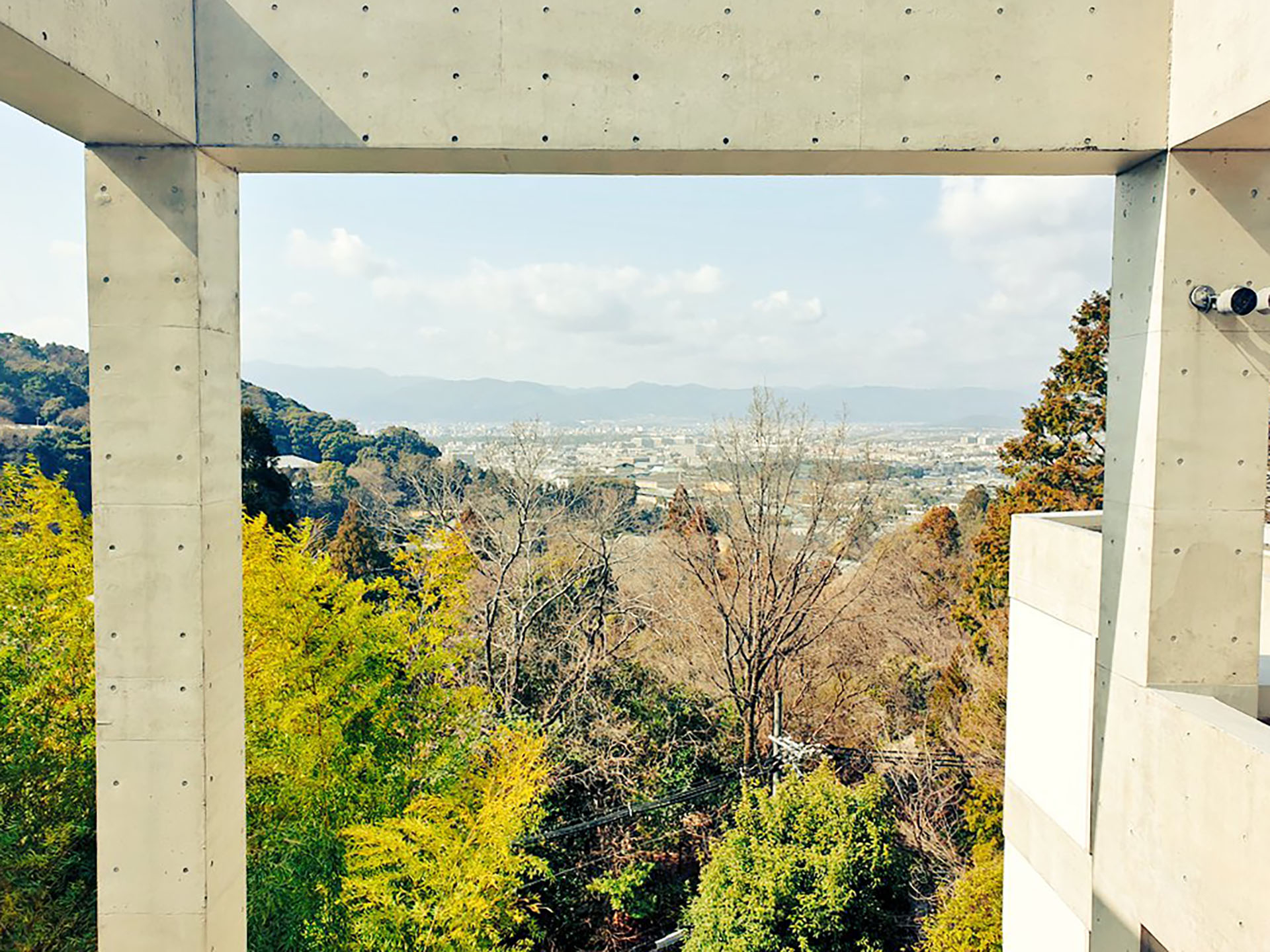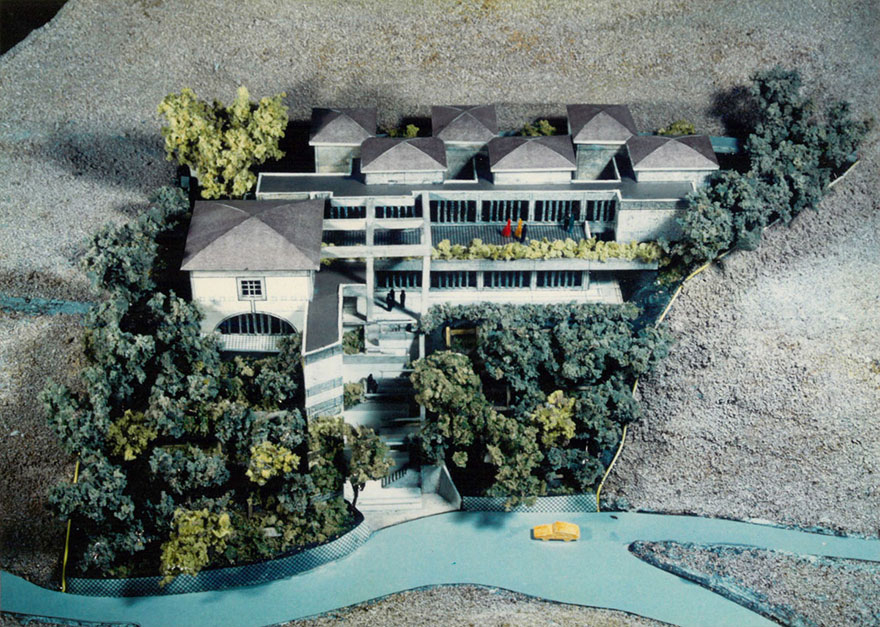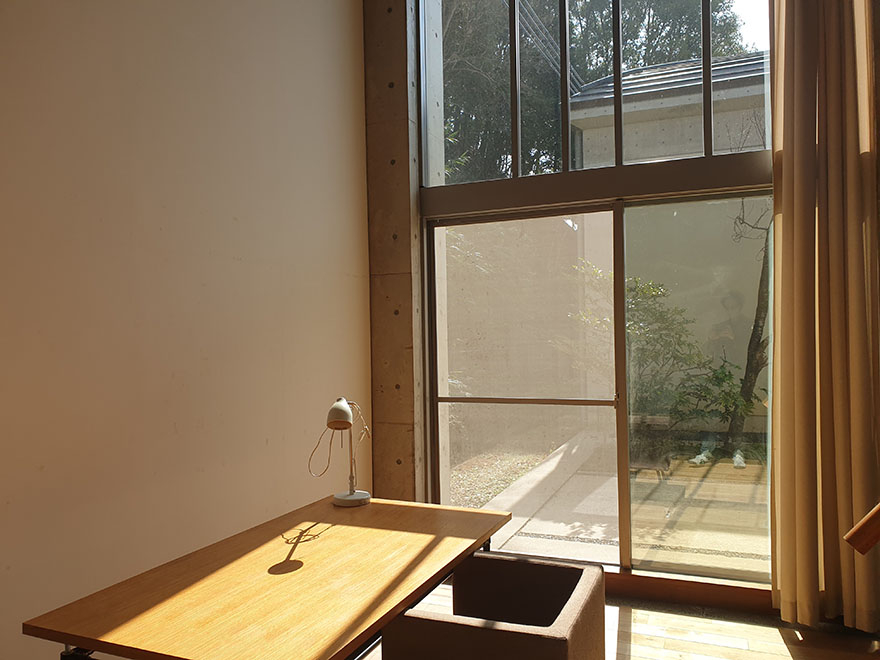AiR Introduction
The Villa Kujoyama: a Cultural Vessel [Part 1]
By Pierre-William Fregonese

Villa Kujoyama
Celebrating its 30th anniversary in 2022, the Villa Kujoyama in Kyoto is the outcome of a long history of cultural exchanges between France and Japan that began over a century ago. This bilateral relationship has been reinforced by waves of cross-cultural influence, from “Japanism” in the late 19th Century to “Neo-Japanism” since the 1970s. Often presented as similar to the prestigious Villa Medici (1666) in Rome and the Casa de Velázquez (1928) in Madrid, the Villa Kujoyama is however unique in many aspects. The common point between the three institutions is that they are residency programs funded by the French government, nevertheless they don’t have the same background, nor are they affiliated with the same ministry. The Villa Kujoyama is related to the French ministry of Europe and Foreign Affairs through the coordination of the Institut français, the cultural operator of the ministry overseas.
Reflecting on the whole structure and its organization, Charlotte Fouchet Ishii, the actual director of the Villa Kujoyama and her team [*1] confirm these specificities: “Indeed, we operate quite differently from our ‘older sisters’, when it would be more accurate to call it an older artist in residence programs than ours. However, we have the habit of working closely together as our respective selections of artists are based on the same criteria: we welcome the most promising of young or confirmed artists. Moreover, since 2016 we have been organizing the festival ¡Viva Villa! in France, a pluridisciplinary manifestation where the artists from our three residencies are invited to introduce their works and research in residency abroad to the French audience.”
[*1] In this paper, the « team » will refer to Charlotte Fouchet Ishii, director of the Villa Kujoyama, Lauriane Jagault, communication officer, and Satsuki Konoike, production and partnerships manager.
Lightness, Gracefulness, and Energy
The project dates back to 1926, when Paul Claudel, the French ambassador to Japan and a talented writer, conceived of/imagined an institute for cultural cooperation. The Villa Kujoyama building was built on the Higashiyama mountain, one of Kyoto’s best preserved historic districts, and more specifically on a land donated to France by the Francophile community in Kansai. The site on the Higashiyama mountain had initially been chosen during Paul Claudel’s mandate by Japanese industrialist, film pioneer and Francophile Katsutarō Inabata to house the Kansai Franco-Japanese Institute, which was built there in 1927. However, Louis Marchand, its third director, decided to move the Institute to the university district (Institut français du Japon – Kansai now). The new site opened its doors in 1936, and what was to become the site for the Villa Kujoyama was then completely abandoned for many years.
In the 1980s, the French government decided to build an artists’ residence, because there already were the Kansai Franco-Japanese Institute which served as a teaching and cultural institution in Kyoto, the Franco-Japanese House in Tokyo, and also The French School of the Far East, a research center dedicated to Japanese studies in Kyoto. Furthermore, the French government wanted to avoid the land being sold at auction, and, even if it was not a long-matured project, it met French and Japanese expectations.

Kansai Franco-Japanese Institute credits French Institute of Japan
Hence, the Villa Kujoyama was imagined as promising new concept in Japan. The construction followed the Claudelian strategic model with construction costs covered by the Japanese, while operating costs were covered by the French. At that time, the concept of artist residencies was brand new in Japan. The structure and framework of the Villa Kujoyama later became a model for other similar projects, like the Goethe-Institut Villa Kamogawa, its German counterpart created in 2011.
Designed by architects Kunio Katō and Uzushi Nakamura, the building’s construction began in January 1991 at the initiative of the then Minister of Foreign Affairs, and the construction of the Villa was completed in a year and a half. The Villa Kujoyama, an ambitious French artists’ residence in Asia, was officially inaugurated at the end of 1992.
Kunio Katō, who had worked closely with the French architect Michel Ecochard, former collaborator of Le Corbusier, on an urban development program in Marseille, had a genuine knowledge of several French architectural styles. Besides, he had also worked on the renovation of the Kansai Franco-Japanese Institute. Thus, in architectural terms, the Villa Kujoyama is the result of a meeting between two styles, two cultures. The place is faithful to both the Japanese and French traditions.
As a matter of fact, Kunio Katō desired to enhance the synthesis of Japanese and French cultures with soft lines, a graceful structure that enhances the combination of light and shade, and vegetation all around the building. This visual, emotional and physical aesthetic brings the outside in. Whether it be by daylight or by moonlight, the light concrete, the large glazed openings of the building, and its elevated position on top of a hill imbue this vessel with a sort of futuristic energy.

Maquette Villa Kujoyama. Photo by Michel Wasserman
An Original Center for Interdisciplinary Exchange and Franco-Japanese Research
The Villa Kujoyama has been playing a crucial role in helping artists develop their professional careers. The cultural exchanges promoted by this residence have been driven towards the transmission of artistic practices and the renewing of the landscape of research and contemporary art. The place also favors cultural exchanges so as to bridge and develop a common understanding between the two cultures through observation, listening, dialogue, and creation. In the very first year of the Villa’s existence (1992 -1993), the Villa welcomed one researcher and five artists. Indeed, the French School of the Far East agreed to delegate one of its members. Then, from the third year onwards, the Villa became an exclusive artist residence. Presentations of the residents’ works were organised in order to catch the attention of both art education institutions in Kyoto and professional operators in Tokyo. In other terms, a form of continuity allowed the anchoring of this French cultural vessel in Japan, since its inception in 1927.
Nowadays, this artists’ residence remains an original center for interdisciplinary exchanges and Franco-Japanese research. It welcomes creators and talents of all kinds. The candidates can submit a project and, if it is accepted, come in and work on it. Since its creation, the Villa Kujoyama has welcomed up to 400 artists from several disciplines and fields of art and crafts, such as contemporary painting, architecture, dance, musical composition, game design… Even if the place is well known for design, visual art, performing art, digital or crafts, the Villa also supports under-represented disciplines. More than 17 different disciplines have been promoted since 2017. “We adopt an intercultural and cooperative approach, when we offer to artists and creators, from various artistic fields – ranging from crafts to visual art, or video games-, a dedicated time for a research project strongly connected to Japan (that’s one of the most important points!) where both professionals can learn from each other and imagine new perspectives,” the team explains.
Regarding the main criteria that are taken into account for the selection of artists, many of whom come from a wide range of disciplines, the team points out: “we cannot say that we are specialized in a field in particular; we are open to all artistic fields. We are looking forward to the excellence of artists and their needs, at a specific time, why a residency stay in Japan is needed to develop a new project linked to the country specifically. We are also mindful about the artists and their practices, as they are ahead of time compared to institutions. For this reason, new fields have been added (like puppets or video games in 2019) to cover the wide spectrum of artistic creation. We are concerned about the process of creation and aim at refreshing ‘academic’ disciplines. In the future, as we can see it during the application process to select our artists, the disciplines and the subjects studied are directly connected to current and social situations. We may expect more projects dedicated to digital and online practices, voice creation or experimental and hybrid disciplines in 2023. We experience this crossover practice every day at Villa Kujoyama.”
Thus, the Villa provides a framework for the artists’ research work, and the latter generally stay for several months, which is roughly the time needed to stimulate and mature their knowledge, for purposes of enhancing inspiration and creativity in a silent place. “At Villa Kujoyama, artists and creators are coming for a two-month up to six-month stay (instead of one year for the other ones). They can be solo, duo or working with a Japanese artist. Our specificity is also to offer our artists the opportunity to have tailor-made support before, during and after their stay in Kyoto. This allows us to follow all the process and operate a great diffusion and knowledge of the projects, in Japan, France and abroad. More than 100 proposals directly coming from Kyoto are presented each year!”, the team says. Another specificity of this program at Villa Kujoyama is that art production is not mandatory during the residency, unlike in other programs.

Photo by Pierre-William Fregonese
Christophe Galati, a French indie game developer has benefited from this program. He started creating games when he was 12, using a software called RPG Maker while learning pixel art and storytelling by himself. After getting a degree in game design & programming at Isart Digital and working in the game industry for a few years, he started to work on his own game as an independent, leading to the release of Save me Mr Tako on Nintendo Switch in 2018. Why did he choose the Villa Kujoyama? The game designer explains: “growing up I always felt an attraction to Japanese culture and games. After watching a documentary about Villa Medicis I thought that it would be like a dream to have residencies for game developers as well. In the past I got the opportunity to come to Japan to showcase Save me Mr Tako at the Tokyo Game Show and BitSummit in Kyoto. I really wanted to get back to Japan and continue to experience its game industry, so when I learned that there was an artist residency in Kyoto I couldn’t resist and I applied. Even though game creation was not in the eligible artistic field list, I applied and got accepted, allowing me to spend 5 months there and start my new project.”
Christophe Galati then explains how important his stay at the Villa Kujoyama proved in the creation of his game: “one of my goals when designing a game is to pay homage to a specific era of Japanese games by learning the aesthetic and using its code to tell something more modern and personal with it. With Save me Mr Tako I paid tribute to the Game Boy(8 bit)era, this time I want to work with the Game Boy Advance(16 bit)aesthetic for Himitsu Project. I started the concept / story research and started to prototype the game during my residency. After being kind of burned out by my previous project, being at Villa Kujoyama was a very precious time to reflect on myself, focus on the messages I wanted to share in my work and become more confident as an artist. Doing this residency allowed me to kickstart the project and fuel me for the years of development ahead.”
Since he left the residency, the game designer has maintained a specific connection with the Villa. “I’m still in touch with the Villa Kujoyama staff and the artists I met there. I was thrilled to meet them again for the Viva Villa exhibition where we all shared our projects. During the residency we organized a Game Jam at the Villa Kujoyama and we were discussing doing it again someday when it will be possible. It also brought many opportunities with the French Institute to me. I’m now invited to talk about games as art and share about this residency. I hope that more game developers will feel confident to enter those artistic places in the future and continue to show to the institutions that our media is an art form and a culture as valid as all the others. I also hope I will be able to return to the Villa Kujoyama at some point to continue my research. Kyoto is a magical place and I left a part of me there, I can’t wait to be able to return,” he explains.
Continue to read [Part 2]
Pierre-William Fregonese
Project Associate Professor (Culture and Society)
Institute for Promoting International Partnerships, Center for International Education
Program Coordination Section, Kobe University
Pierre-William Fregonese. Interview with Christophe Galati. Personal interview. July, 2020.
Pierre-William Fregonese. Interview with the team of the Villa Kujoyama (Charlotte Fouchet-Ishii, Lauriane Jagault, and Satsuki Konoike). Personal interview. August, 2020.
L’Institut Franco-Japonais du Kansai (1927-2003). Kyoto: Institution Français du Kansai, 2003.
Serres, Michel, “Pour célébrer l’échange.”, Transcript of speech delivered at the Inauguration of the Villa Kujoyama, Kyoto, Nov. 5, 1992.
Villa Kujoyama 25 ans, Villa Kujoyama 25th Anniversary. Kyoto: Villa Kujoyama, 2017.